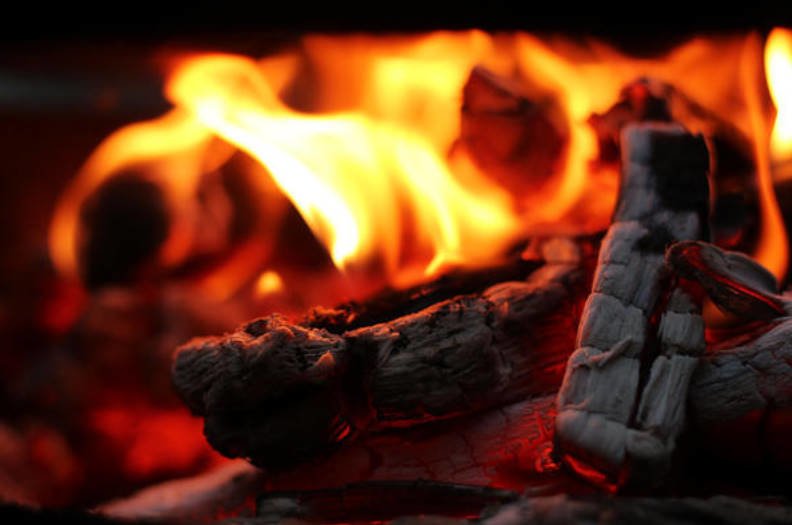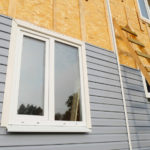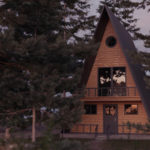The cheapest type of fuel for domestic boilers is main gas. The most reliable and safe — electric boilers. However, the gas pipelines do not reach all settlements, and the cost of operation of the electric boiler is high, and not everywhere there is an opportunity to obtain the necessary electrical power.
Therefore, for many owners of private houses and cottages there is a choice between heating devices running on liquid or solid fuel. Let’s take a closer look at the pros and cons of different types of solid fuel for boilers.
What is solid fuel and how it happens
It is obvious that solid fuel, unlike gas or simply public diesel fuel (that actually is diesel fuel or solar oil), solid, that is exists in the form of plates, pieces, bars or other form, not spreading and not evaporating. But any type of fuel has one thing in common: in all these combustible substances, carbon is the main element. It is born thanks to the Sun and the process of photosynthesis in the green parts of the plants, as a result of which in the cells formed complex organic compounds based on carbon, which later turned into combustible substances — fuel.

The basis of photosynthesis
Physics in the furnace
The main characteristic of all types of fuel-calorific value, specific heat of combustion. This is a physical quantity that characterizes the amount of heat released during the complete combustion of a unit of fuel. Typically, the unit used is mass (one kilogram) or volume (one cubic meter).
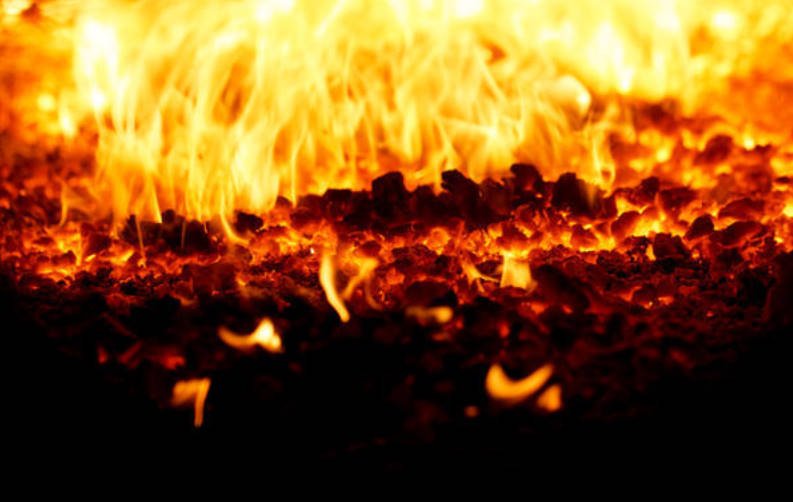
Combustion process
The value of the specific heat of combustion of fuel is higher, the less its consumption, and the efficiency of the burning device is greater. For the owner of the boiler this means that the heating process will be more economical.
The chemistry of the combustion process
The calorific value of different types of fuel depends on its chemical composition: on the amount of carbon, as well as other impurities (oxygen, nitrogen, sulfur and hydrogen). Carbon and hydrogen are the main carriers of energy, which turns into heat when burned. Nitrogen and oxygen do not participate in the combustion process, they are ballast substances, their presence in the fuel reduces the percentage of the main elements — carbon and hydrogen.
Oxygen also forms compounds with carbon and hydrogen and thereby removes some of them from the combustion process. Sulfur in solid fuels is contained in two forms: in the form of volatile sulfur, also involved in combustion, and in the form of non — combustible sulfates, which remain in the ash-ballast minerals, unable to burn.
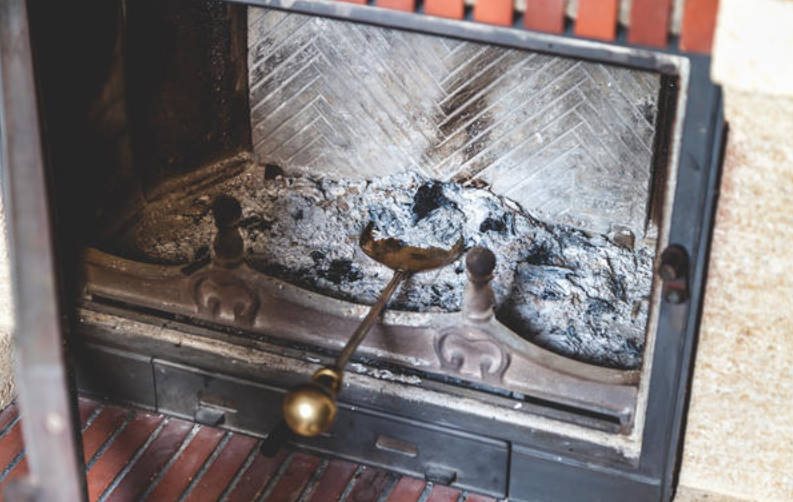
Ash-ballast mineral substances that cannot burn
The more mineral (non-combustible) substances in the fuel, the more ash is formed, the more fuel efficiency is reduced, because the combustible substances are replaced by ballast. The ash content indicator is the second significant characteristic of fuel quality.
The presence of sulfur in the fuel pollutes the combustion products, being released in the form of sulfur dioxide — a toxic substance that, when interacting with oxygen, is oxidized to sulfur trioxide, and when interacting with water, forms sulfuric acid that corrodes the metal surfaces of the boiler equipment. Getting into the atmosphere, this acid falls in the form of acid rain.
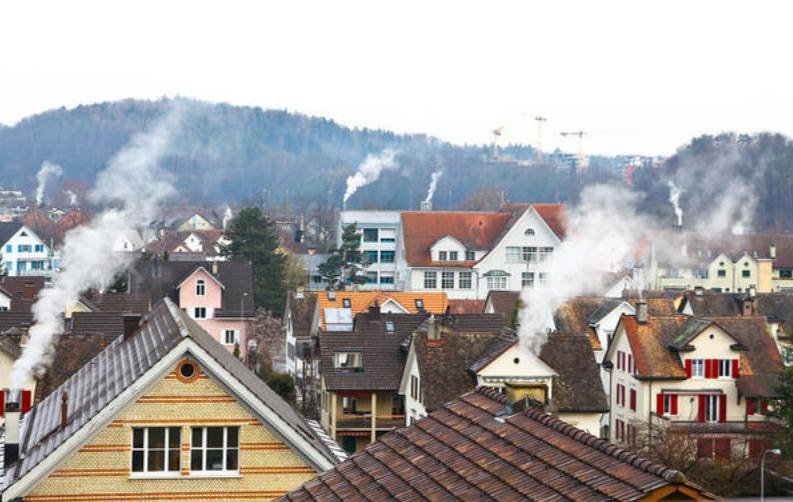
And the pipes…
In fact, for a complex physical and chemical combustion process, anything can be used as a fuel: the main thing is that the process goes on and heat is released. For example, in many areas where access to other combustible substances (e.g. wood or coal) is limited or impossible, dried manure of cattle (and not very), mixed with straw.
In the rural areas of Northern India, dried cow and sheep manure briquettes are now used even in thermal power plants to generate electricity. According to its physical characteristics (specific heat of combustion), cow pellets are quite comparable to coal.
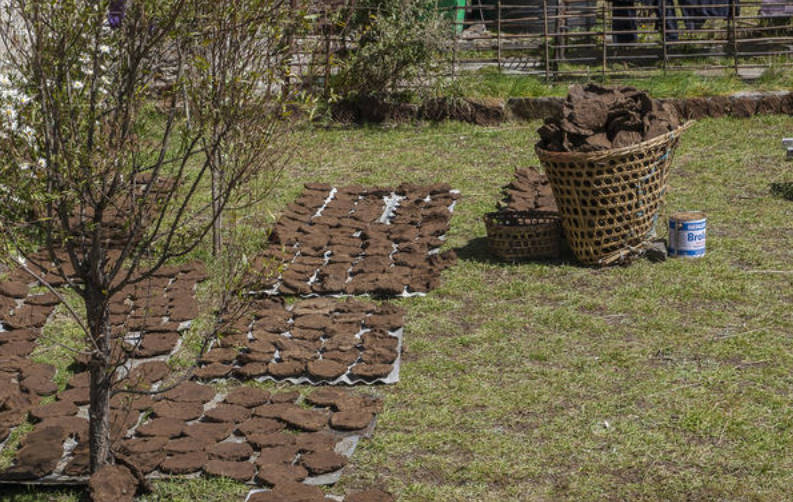
Cow cakes designed for heating, dried in the yard
But the modern owner of a country house often it is difficult to imagine a spreading dung in his yard to dry for future heating season. And with cow cakes now in many places the situation is tense. Therefore, we will not delve into the details of the optimal proportions of manure and straw, as well as methods of proper drying of doodles.
Let us pay attention to the pros and cons of common solid fuels: wood, coal, peat. For domestic boilers, these types of combustible substances are most often used, and on an industrial scale, oil shale is still used.
Specialists divide solid fuels into fossil fuels — that is, the resulting metamorphism from organic residues millions of years ago under high pressure and temperature, and non — fossil fuels-this type of fuel includes wood and its technological derivatives.
Firewood
Firewood is the simplest type of fuel available without geological surveys and developments. Probably, everyone in his life at least once sat by the fire, enjoying the fascinating magic of the dance of flames and warmth.
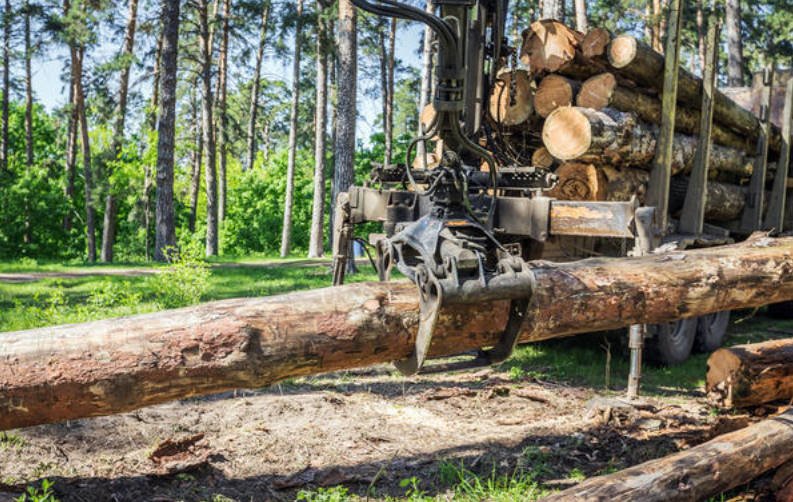
Logging
In the modern market of heating devices there are many models of boilers of different degree of complexity, designed specifically for the use of firewood.
For example, the model line of the company Viessmann presents four types of boilers designed for burning wood and fuel briquettes: from a small Vitoligno 100-S capacity up to 20 kW, to Vitoligno 250-S, “swallowing” logs up to a meter. This boiler, which has a volume of the furnace to 500 liters, will provide a capacity of 40 to 170 kW.
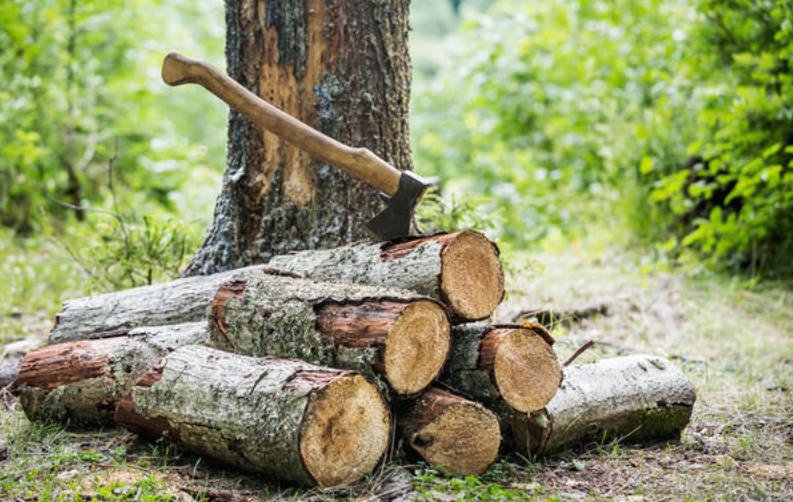
Minus one grove for heating one house every winter…
If we look away from the global problems of ecology of the planet associated with deforestation, the wood (provided that they are high-quality, that is, dry and hard rocks, for example, birch) have the following characteristics:
- quite high calorific value. The wood contains 50-58% carbon, the specific heat of combustion of wood to 15 MJ/kg;
- during combustion, a relatively small amount of ash is formed;
- the wood does not contain sulfur;
- firewood does not cause active harmful effects on the environment.
From the negative qualities of wood can be called volume: fuel for the heating season can take up a lot of space. It should be noted that the optimum moisture content of wood is achieved with a one – two-year aging, and therefore usually a reserve of two years.

Woodpile
Another disadvantage of wood-the need to pre-process: sawing, stabbing, put in a woodpile. You can buy already chopped wood, but then the cost increases. Another important point is that the high heat of combustion of wood depends largely on their dryness. Therefore, the storage space should be not only spacious, but also protected from the effects of precipitation.
Fuel briquette
There is an alternative to the usual logs. It is pressed in the form of a log or brick waste wood production, food industry or agriculture. In the production of fuel briquettes, adhesive compositions are not used: the raw material is subjected to steaming and pressing, the particles are joined together only by a natural polymer — lignin.
In the models of heating boilers, designed for the furnace with conventional wood, you can use fuel briquettes
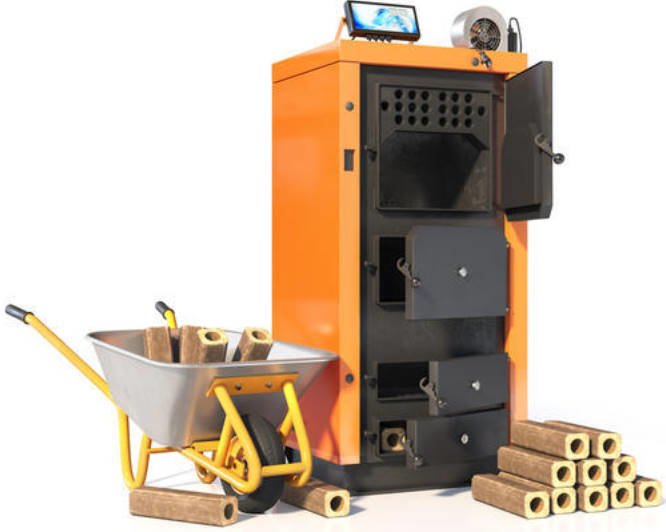
Solid fuel boiler for use of wood or fuel briquettes
The most common types of fuel briquettes on sale are:
- pini-kay;
They have the form of a four-or hex “log” with a longitudinal hole, the surface color is usually dark. Pini-kay type briquettes are made on screw presses with a pressure of about 1000 bar, so they have the highest density – from 1.08 to 1.40 g / cm3. The hole in the “billet” improves air circulation in the furnace and increases the burning area and thus increases the efficiency of fuel combustion.
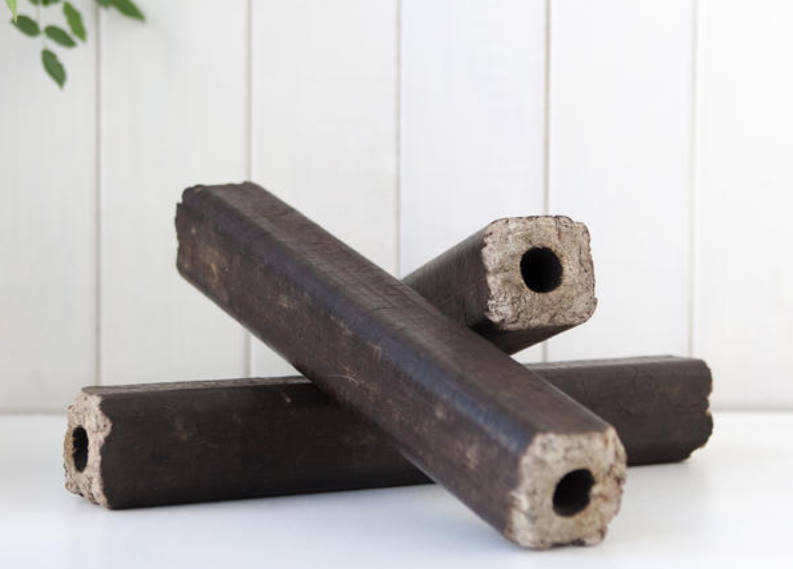
Pini-kay fuel briquettes
Pini-kay briquettes are darkly heat treated, so they are more moisture resistant. Heat treatment-heating to + 200 degrees Celsius without oxygen-and increases the rate of combustion.
- nestro, other trade name-Nelson;
Fuel briquettes Nestro are made on impact-mechanical or hydraulic presses, creating a pressure of 400-600 bar, so they have a lower density-0.9-1.2 g / cm3. As a rule, they are cylindrical in shape, can have a hole or be without it.
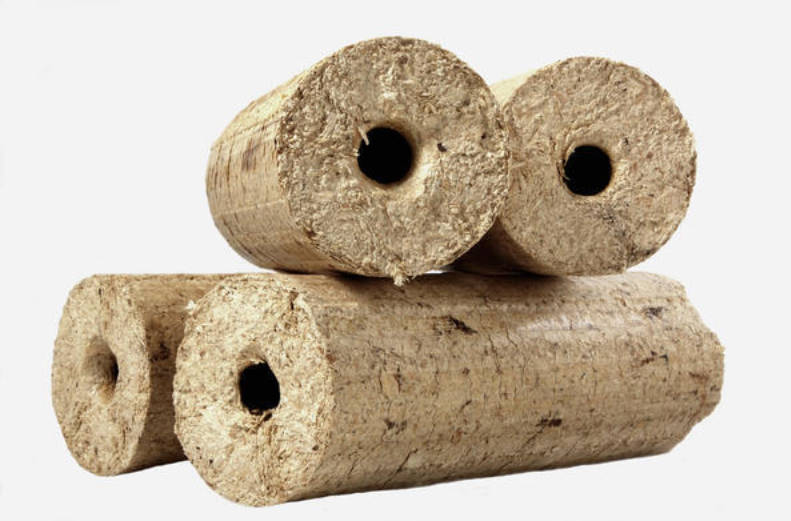
Nestro fuel briquettes
- RUF;
Fuel briquettes produced under the RUF trademark have the form of bricks, so they are often called “bricks”. Produced on hydraulic presses with a pressure of 300-400 bar. They have the lowest density-0.75-0.8 g / cm3.
Fuel briquettes in General have the same calorific value as ordinary firewood, because the raw material for their production is the same wood.
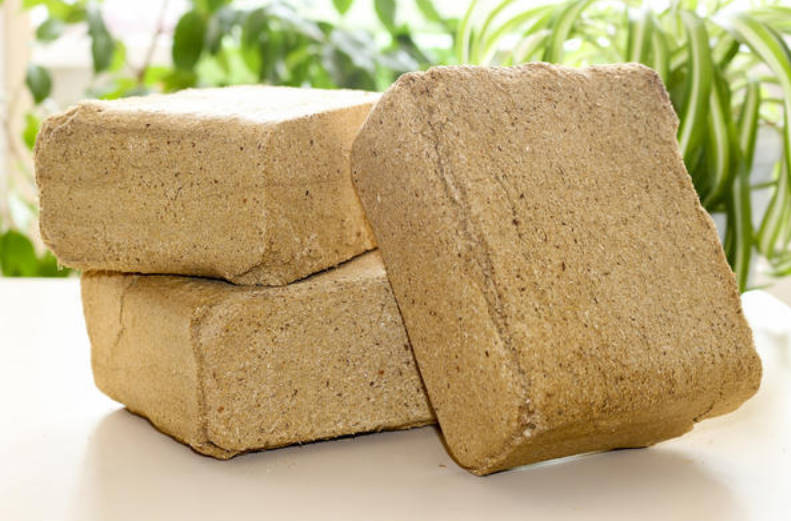
RUF fuel briquettes
But due to the greater density and less than wood moisture (4-6%), briquettes have a higher specific heat of combustion. So pini-kay allocate 4538 kcal/hour (for comparison: birch wood — 3538 kcal / hour).
The calorific value of fuel briquettes, in addition to the manufacturing technology, is influenced by the quality and type of raw materials. There are briquettes of coniferous and deciduous wood, as well as mixed and with additives of other vegetable raw materials. The” warmest ” — briquettes, which use sunflower husks. They produce little ash and a bonus in the composition: due to the use of sunflower husks there is oil, which has a greater specific heat of combustion than wood. But briquettes from the husk of seeds actively pollute the chimney with soot-all because of the presence of the same oil.

There is soot-there is work for a chimney sweep
In second place for the return of heat — briquettes of sawdust: products of this type in the amount of heat produced are commensurate with the wood. The smallest heat transfer has artificial logs, compressed from rice husks.
When choosing fuel briquettes, it is necessary to take into account not only the calorific value of a raw material, but also the ash content, that is, the percentage of ballast substances in the feedstock. Briquettes made of rice husks, in addition to a lower specific heat of combustion, have a high ash content — about 20% (compare with 2.5% ash when burning wood — no matter in the form of a log “classic” or “fuel briquette”).
Another point that you should pay attention to when buying — the size of the briquettes. The highest quality, produced from uniform raw materials on modern equipment, have a thickness of 60-80 mm and a length of 250-350 mm. Cheap-thinner and shorter: a diameter of 40-60 mm and 50-150 mm in length. This is due to the looser structure: “billet” large format fall apart under its own weight. The friability of the structure naturally affects the calorific value.
For those who think about environmental issues, fuel briquettes are the most preferred type of fuel. For their production waste is used: sawdust, rice husks, buckwheat or sunflower seeds, corn stalks, hay and other, and not the whole trees.
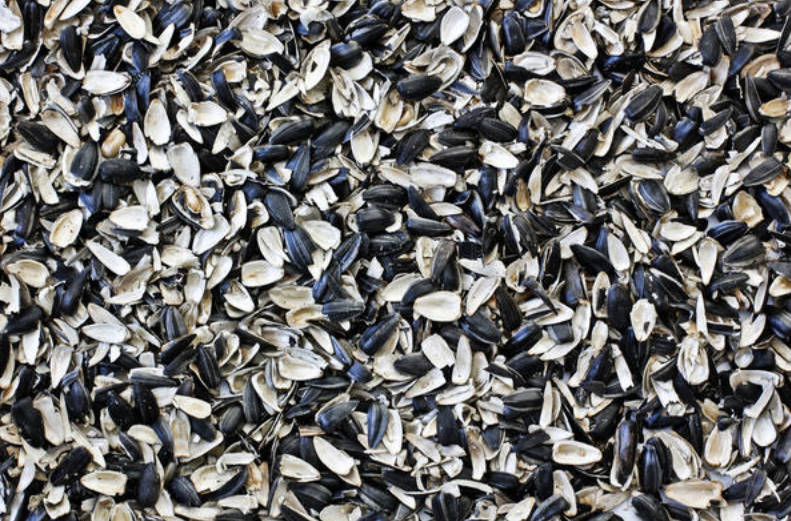
Sunflower husk
Fuel briquettes are more compact and technological in use than the usual logs: smooth cylinders with holes can be more tightly placed in the furnace than curves and knotty natural wood. But in using them there are certain disadvantages as well.
The high cost of fuel briquettes in comparison with conventional firewood.
Calculations are presented to demonstrate the economic benefits of fuel briquettes. It is argued that despite the higher initial cost per ton, when burning the fuel briquette of the final kilowatts you will get almost twice as much as burning ordinary.
But if you calculate more carefully, it turns out the following: the heat from the fuel briquette you really get more than from the usual birch. But not twice, as promised, and about a third — 26%. And the money received for that kilowatt-hour will pay 55% more. And I in the calculations used the cost of already chopped firewood, which are more expensive.
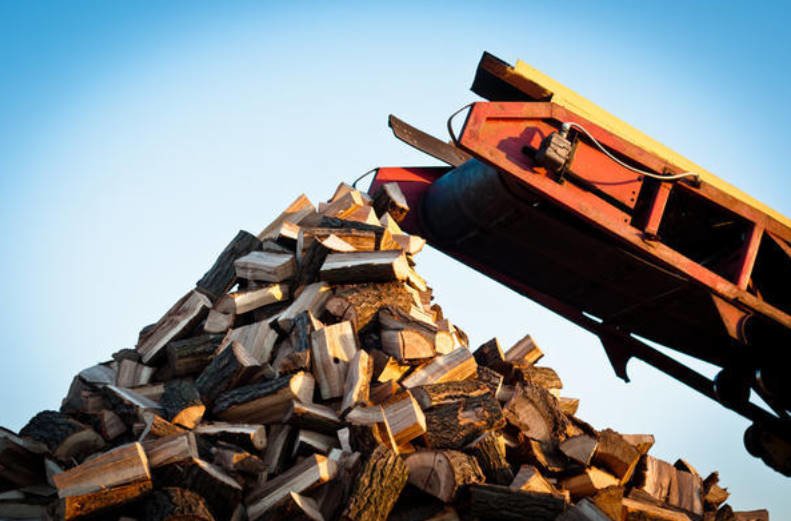
Chop firewood
And if we take into account that in the price of the car firewood is already laid the cost not only of themselves, but also delivery, and purchased fuel briquettes need to bring to the house, and not everywhere they are freely sold, the choice for many becomes obvious. In my calculations, I was guided by the cost of Pini-kay briquettes — the most expensive, but also the most efficient in heat transfer.
Briquettes need to properly store
The technology of production of sawdust briquettes does not involve high humidity during storage. This means that if you plan to store them in the same way as conventional wood (under a canopy on the street), then after a fairly short time you can get a bunch of raw materials — sawdust instead of smooth fuel briquettes.
Pellets-fuel pellets
In addition to fuel briquettes, from such raw materials (sawdust, straw, husks, chicken manure), another type of fuel is produced — fuel pellets. In European countries, they began to produce in the middle of the last century. And now the pellet boiler is one of the most common heating devices in America and Europe. Up to 80% of all boilers account for those that are designed for fuel pellets.
Feedstock crushers milled into flour, which enters the pellet mill, compressing it into granules with a diameter of 6-8 mm and a length of about 50 mm. in different countries adopted different standards of pellet size. As well as fuel briquettes, pellets have a higher density and lower humidity in comparison with wood.
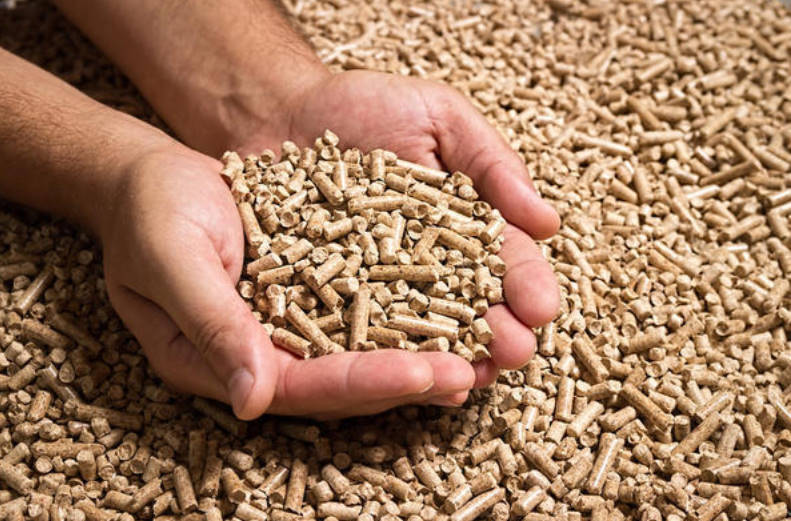
Fuel pellets
Their specific heat of combustion is the same as wood — 3.5 kW/h. In addition to the light, you can see on sale and black granules. These are heat-treated pellets, they can be called bio-coal. Torrefication (heat treatment) substantially increases the calorific value, equating the heat-treated granules of charcoal.
There are three types of fuel pellets:
- Standard-dark colored granules, as for their manufacture using (in addition to sawdust) sunflower husk and buckwheat husk. Varieties of “standard” allowable percentage of ash content — 3%. This is the most popular type of pellets, because with good performance of heat they have a small cost.
- Premium -granules are white or light grey. It is characterized by high specific heat of combustion and low ash content-0.4%.
- Industrial-used in industrial boilers. Granules of dirty gray color are made of wood waste with bark, have the lowest cost.
For the use of fuel pellets, boilers of a special design are needed-with a bunker and a fuel chamber designed for this type of fuel.
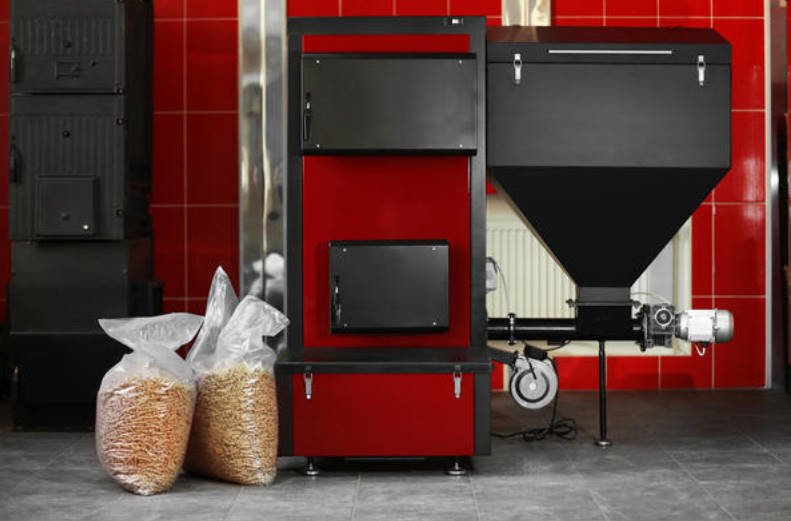
Pellet boiler
Due to the technological efficiency of the burner, the efficiency of the pellet (pellet) boiler is higher than other solid fuel boilers and is comparable with the performance of gas models.
Sawdust and wood chips
Sawdust and chips are used not only as raw materials for the production of fuel pellets and briquettes, but also as an independent type of solid fuel. The use of waste wood can solve the problem relevant to most solid fuel boilers: long-term combustion.
In gas or liquid fuel boilers, the issue of continuous fuel supply is solved by maintaining the pressure, which ensures the boiler automation and fuel pressure in the line. In solid fuel models, the owner must also be a fireman: the furnace has a fixed size and after the laid portion of the fuel burns out, you will need to lay a new one. Boilers designed for the furnace sawdust, have a hopper, allowing continuous supply of fuel for uniform operation for 10-12 hours. Therefore, they are devices of long burning.
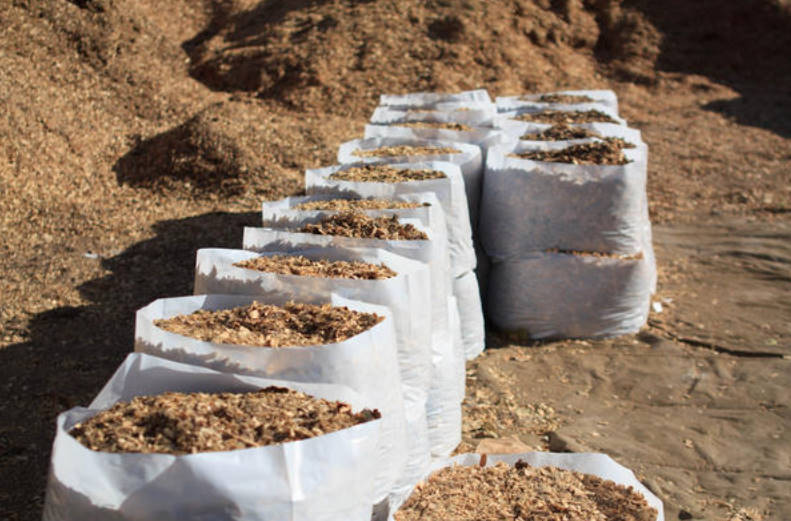
Sawdust to the furnace of the boiler
The same device (with a bunker for automatic fuel supply) in models for coal and pellets, but the use of waste wood can solve the problem of long-term combustion is very economically: sawdust chips and sawdust are free or very cheap. This is one of the main advantages of sawdust boiler. Where there is a sawmill, the cost of waste can be zero, and, subject to self-delivery, the fuel for your boiler will be completely free, except for shipping costs.
In this article you saw a comparison of different types of non-fossil solid fuels: wood and its derivatives (fuel briquettes and pellets), as well as sawdust and chips. In the following material, we consider the types of fossil solid fuels: different types of coal, peat and their derivatives.
